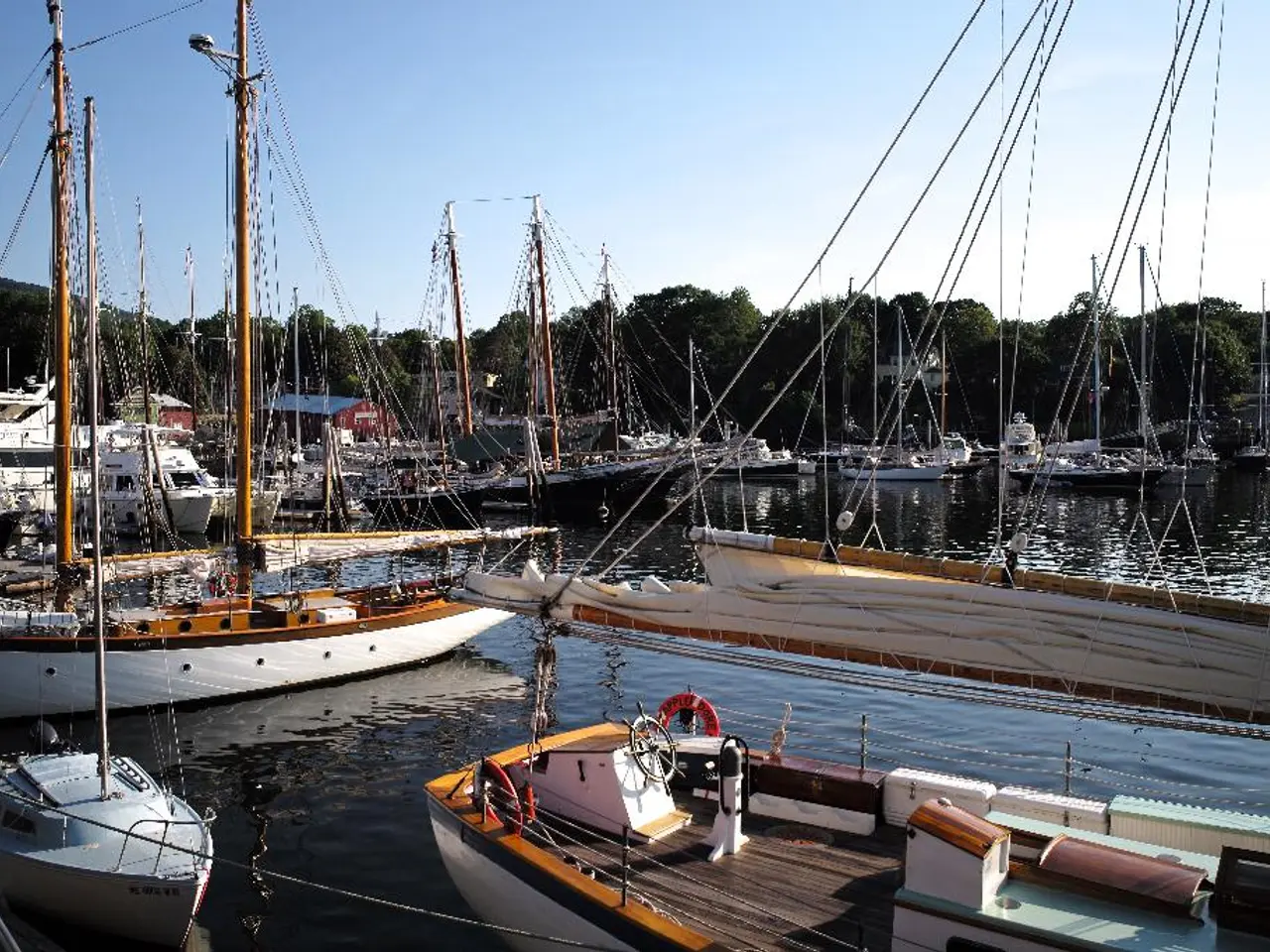Hurricane forecasters face tool outage during the onset of the hurricane season
In the midst of the active Atlantic hurricane season, the National Oceanic and Atmospheric Administration (NOAA) is facing a significant challenge following the unavailability of Saildrones for the 2021 hurricane season due to contract delays. However, the agency has managed to compensate for this gap by strengthening collaborations, leveraging technology, and augmenting data sources.
Saildrones, uncrewed ships designed to collect real-time data in tropical storms, have been a key part of NOAA’s observation fleet since 2021. The vessels, equipped with a suite of instruments, measure wind speed, wave height, temperature, pressure, salinity, and the transfer of heat and moisture between the ocean and the air above it. They transmit data to forecasters in real time, helping refine hurricane forecasts and public messaging.
However, Saildrone was unable to bid on a NOAA contract for this hurricane season. To address this, NOAA has turned to partnerships with university-based cooperative institutes, such as the Cooperative Institute at the University of Miami, which uses drones and remote research vessels to gather hurricane data and improve forecasts.
NOAA also complements U.S. data by integrating forecasts and data from international centres in Japan, Canada, the UK, and the European Centre for Medium-Range Weather Forecasts (ECMWF). ECMWF models, in particular, sometimes outperform American models in hurricane tracking, providing valuable alternative perspectives.
In addition, NOAA will have to lean on aerial storm-tracking tools such as weather balloons, new lightweight drones, and StreamSonades due to the absence of Saildrones. StreamSonades are tiny biodegradable probes dropped from a hurricane hunter aircraft to collect atmospheric measurements as they fall through the storm.
The new lightweight drones, like the Black Swift SØ, are designed for rapid atmospheric profiling. These tools, while valuable, cannot match Saildrones' ability to provide live storm footage or reliably measure wind and sea surface temperatures over long periods of time.
NOAA is preparing for the use of uncrewed surface vehicle deployments with industry partners for the 2026 season. The agency is also exploring the use of other uncrewed systems for data collection in tropical cyclones during the 2025 season.
Despite these challenges, NOAA's National Weather Service (NWS) office has faced staff cuts, grant freezes, and travel and training restrictions since President Donald Trump took office. The office has lost over 10% of its staff since January, straining resources even further during the hurricane season.
Losing Saildrone is another significant blow to NOAA's forecasting abilities, but the agency remains committed to maintaining and improving its tropical cyclone data collection and forecasting capabilities. The agency's resilience and adaptability in the face of adversity are key to ensuring accurate hurricane forecasts and keeping communities safe during the hurricane season.
- The National Oceanic and Atmospheric Administration (NOAA) has been relying on technology to compensate for the unavailability of Saildrones during the 2021 hurricane season.
- To complement the data provided by Saildrones, NOAA has established partnerships with university-based cooperative institutes, such as the one at the University of Miami, that use drones and remote research vessels for hurricane data collection.
- To adapt to the absence of Saildrones, NOAA is utilizing various gadgets such as weather balloons, new lightweight drones, and StreamSonades, which are tiny biodegradable probes for atmospheric measurements.
- In the future, NOAA is planning to deploy uncrewed surface vehicles with industry partners for the 2026 hurricane season and is exploring the use of other uncrewed systems for data collection in tropical cyclones during the 2025 season.
- The environmental-science community is concerned about climate change and its impact on weather-forecasting, as precise hurricane forecasts are crucial for minimizing the damage caused by these extreme events.
- Despite the ongoing challenges, including staff cuts, grant freezes, and travel restrictions, NOAA's National Weather Service office is committed to maintaining and improving its tropical cyclone data collection and forecasting capabilities for the safety of communities during the hurricane season.




